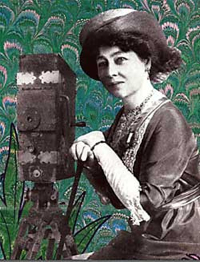In Hollywood, The Numbers of Women Matter

I’ve been working in the movie industry many years and often I am the sole female on a crew of men. I have worked in visual effects, editing rooms and on production sets. The number of women on these crews is significantly less than the numbers of men. It’s not surprising that the majority of movies have mostly male characters and male story lines.
Early in my career a female producer told me that movie production is “like the military.” She explained that there is a “leader” and there are the “underlings.” A movie set is a very masculine environment with a strong hierarchy and male language. Like the sports analogies commonly used in politics (“He is within striking distance.”) words used in moviemaking are also male. Once I was about to begin a seven-day-per-week work schedule in a visual effects studio on a high profile movie. My manager compared being a member of this hard working crew to being in a war. He explained that we “are being told to go up that hill and by God, we are going up that hill.”
Women can get overlooked. Recently I was told a story by a friend of mine who had been working on a movie about basketball. She was an assistant to the First Assistant Editor. (In the movie editorial hierarchy there is the Editor, the First Assistant Editor and then the Second Assistant Editor.) My friend, the Second Assistant, was so busy her boss hired an assistant for her – this assistant was male. He became the “Second Second” assistant. See the hierarchy? Although he was “below” my friend in the chain of command the first Assistant Editor (my friend’s boss) asked him to “pull selects” for an action sequence.
This meant he bypassed my friend in the hierarchy and gave the covetous role of “pulling selects” (finding the best footage in the dailies) to the man. Well, the male assistant didn’t do so well and one day my friend was asked to step in. She shined. Magnanimously, her boss apologized to her and admitted that he assumed the man would know basketball better than she.
The majority male atmosphere doesn’t stop in the edit room or the set.
I am always surprised at the overwhelming numbers of men in the Academy screenings room. The people in these screenings are the Academy members who vote on whether or not a film will get nominated for an Oscar. (In its 85-year history only 4 women have ever been nominated for Best Director. One woman, Kathryn Bigelow, won in 2010) In 2012 The Los Angeles Times conducted a study that showed the majority of Academy voting members are male.
One woman on a team of men is clearly out numbered. Sometimes the lone woman in the group will absorb the behaviors of men in an attempt to “fit in.” She will try to be “one of the guys.” Ultimately, it doesn’t work because gals are not guys. However, if women are in numbers greater than one, women’s voices and ideas get stronger.
The under representation of women in Hollywood moviemaking has serious repercussions. Coincidentally women are also underrepresented as characters on screen.
Ground breaking work by Stacy Smith, Associate Professor at the University of Southern California and the Geena Davis Institute on Gender in Media give us a look at the connection between the lack of women working on films and lack of women characters in high profile movies. In 2010 Smith published her findings after studying 100 top films of 2007. What she found might make you think twice before you put your money down for a ticket to a Hollywood film, especially if you have a daughter.
In 2010 Professor Smith wrote about her study: “Out of 4,379 speaking characters coded in our study, only 29.9% are female.” Additionally, the study found that of all the directors, producers and writers in Hollywood in 2010 men outnumber women by a 5:1 ratio.
The really arresting part of Smith’s study is this: “When only males were at the helm, the percentage of females on-screen was 29.3%. For films with a female director, the number jumped to 44.6%!” Gender does make a difference.
Many people might say to me “Movies have always been dominated by men.” Well, cinema has a long history. As an independent filmmaker I’ve focused on forgotten women who have achieved great things. I discover female inventors, architects, scientists, and filmmakers who have been omitted from history books.
The views and opinions expressed in this post are those of the author(s) and do not necessarily reflect those of MomsRising.org.
MomsRising.org strongly encourages our readers to post comments in response to blog posts. We value diversity of opinions and perspectives. Our goals for this space are to be educational, thought-provoking, and respectful. So we actively moderate comments and we reserve the right to edit or remove comments that undermine these goals. Thanks!